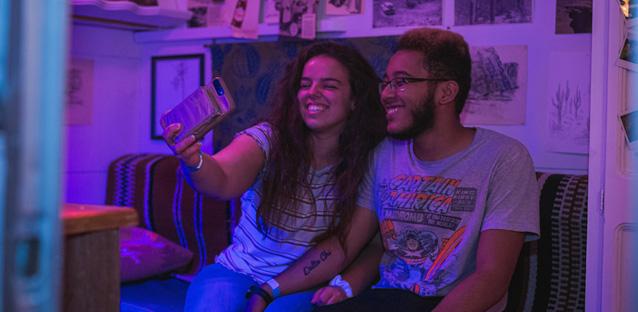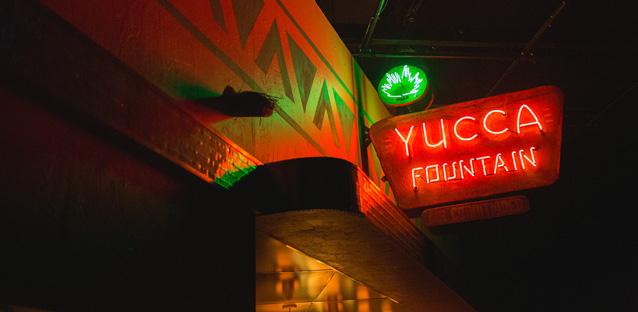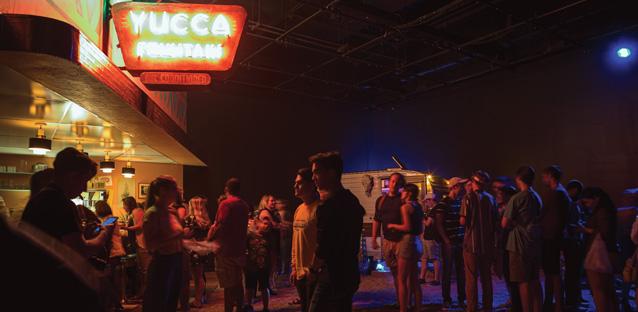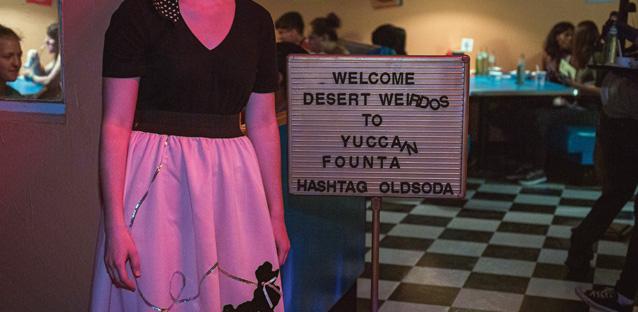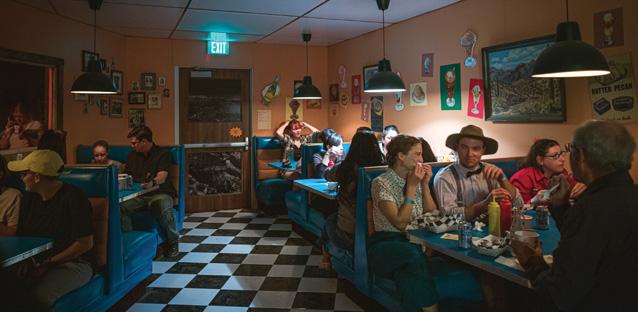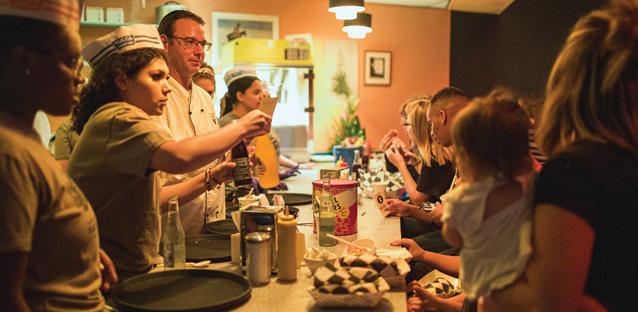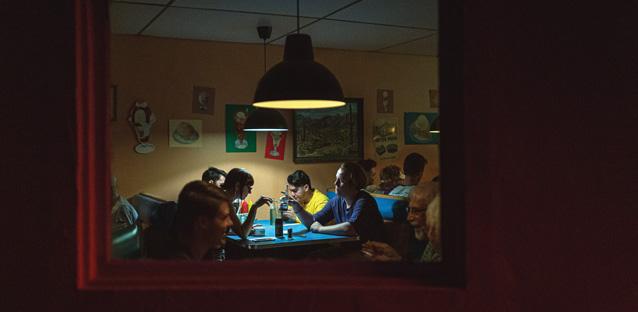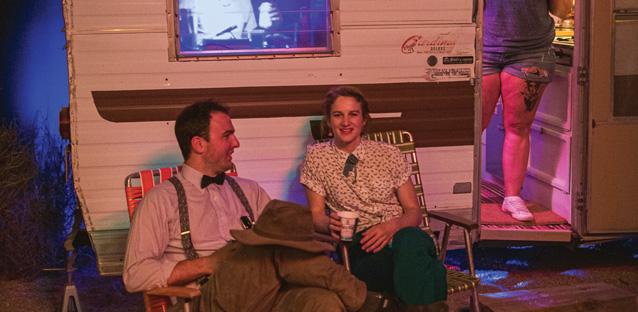Redefining the Reality of the Gallery
UNC Galleries’ unique new installation in the Campus Commons is breaking down barriers and drawing audiences of all kinds in an effort to make art more accessible to students and community members alike.
Stuffy. Pretentious. Intimidating. Boring.
When it comes to art galleries like the brand-new space in the Campus Commons, these are all too often the misconceptions curators like Pam Meadows are up against.
“I think there are preconceived notions or stereotypes about how to act within an exhibition or at a gallery opening. Visitors usually enter a space, a white cube, with artwork on the walls, and the learned behavior is to not touch anything, speak softly and spend a moment with each before moving on,” says Meadows, director of UNC Galleries.
In an effort to overturn misconceptions and actively engage all UNC students and community members in a deeper appreciation of the arts, Meadows teamed up with Boston-based artists Andrew Bablo and Helen Popinchalk to completely transform the Campus Commons Gallery into a one-of-a-kind, interactive, consuming experience.
“Andy and I have been working together for about three years now doing installations focused on immersive installation pieces, and we’re always trying to push the envelope,” Popinchalk says. “We’re changing the way something looks or the way something sounds or the way something feels, but how can we continue to push it so that we’re engaging more and more senses?”
So, when the duo stumbled upon remnants of a mysterious 1950s era soda fountain, it appeared to be the perfect opportunity to take their work to another level.
“This gave us the opportunity to really transport the gallery visitor back to the desert in the 1950s with a full gallery restoration of the fountain,” Popinchalk says.
After months of meticulous planning, Yucca Fountain was resurrected in Greeley. Opening night brought just under 900 students and community members through the gallery doors. Inside, waiters decked out in soda jerk paper caps served up snacks and ice cream to hundreds of clamoring customers.
“It’s kind of like the ultimate experience. We’re taking visitors back in time. You can buy the food, you can sit in the seats, you can sit in the booths and you can buy a hot dog for 25 cents, the same price as it was in the 1950s,” Bablo says. “For us it’s a dream project. It’s really cool to bring something like this back to life.”
It’s a dream project for Meadows too; as a curator she couldn’t be more pleased about the turnout on opening night and the community support that’s making it possible to offer even more immersive experiences while UNC plays host to Yucca Fountain.
“This exhibition is a truly all-encompassing experience. It pulls you in and engages all your senses. Guests are encouraged to touch things, taste things, explore and have fun. Yucca Fountain shatters those preconceived notions about galleries that I mentioned previously,” Meadows says.
That’s exactly why they’ve planned a series of free public events to keep pushing boundaries and draw in visitors from every area of campus and the Greeley community.
“My day job is in academia, and there are always these conversations about how to create opportunities for collaboration — cross-disciplinary collaboration especially — and people are always trying to figure out how to do this. This exhibit provides a place to foster those types of collaborations,” Popinchalk says.
Thanks to the support of many generous donors via a crowdfunding campaign co-hosted by UNC’s Office of Advancement, additional opportunities for that interdisciplinary collaboration have become a reality. The space will play host to former Director and Curator of the Johnson and Wales Culinary Institute, author and scholar Richard Gutman. Gutman is internationally recognized for his expertise in the history of American diners. For Yucca Fountain, he will present a new talk titled, “When the Romance of the Road Meets the Reality of the Gallery.”
Donor support has also made it possible for UNC Galleries to partner with UNC’s Film Studies program this coming spring, to offer a series of atomic-era film screenings in the space.
“I’m so thrilled to host an exhibition that supports student success no matter the discipline one is pursuing. Whether you’re a parent coming to UNC with a prospective student, a biology student, or someone passing through the building on the way to the dining hall, you’re really going to stop and be like, wait, what is this? This show captivates you instantly, and I love that as a curator,” Meadows says. “I’m pumped to share this experience with our students whether they want to make a life as a professional contemporary artist or are just exploring new things on our campus. I couldn’t pick two better examples to show the students how you need to creatively problem solve and think outside of the box.”
“I think that’s part of why I got interested in installation art in the first place, because I just felt like galleries were becoming too stagnant for people,” Bablo says. “My hope with installation art was to kind of break down that barrier of what the misconception of what the gallery really is, pull in more people, different people.”
And that’s exactly what Yucca Fountain is doing — redefining the reality of the gallery.
–Kaitlin Berry

